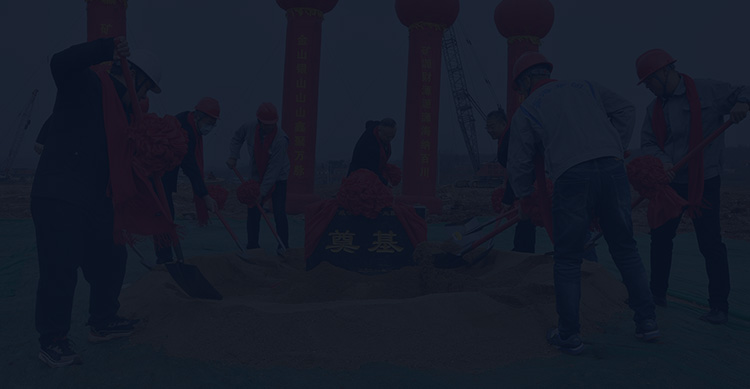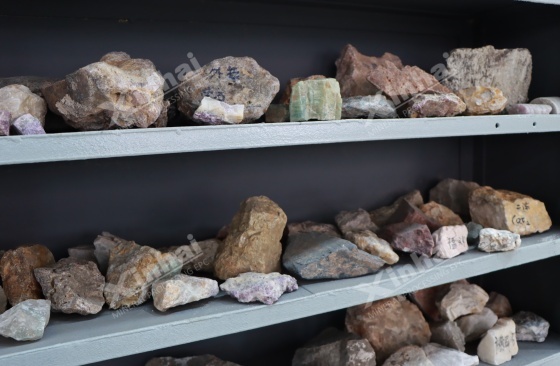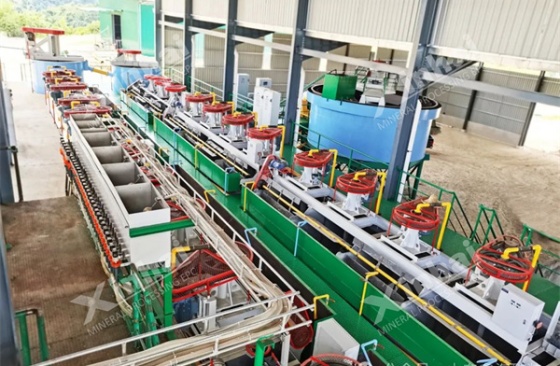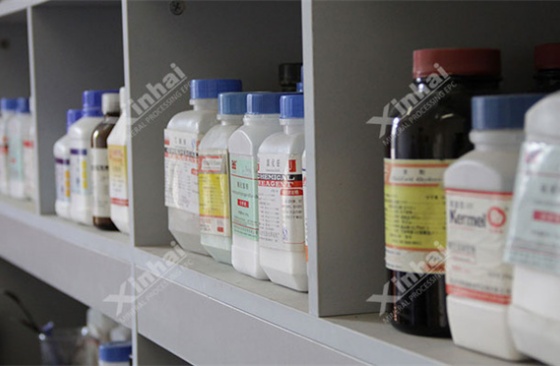
Lepidolite is a type of mica ore with a Mohs hardness of about 3.0. It is a common lithium-bearing mineral in nature and an important source of lithium metal. There are four main methods for lepidolite extraction: hand selection, flotation, chemical treatment, and thermal crushing. This article will introduce these four extraction methods and several commonly used flotation agents for lepidolite.

1.Hand-Selection Method
The hand-selection method is suitable for lepidolite ores with moderate particle size and good crystallization. Through manual sorting, higher-quality lithium ore can be obtained. However, this method consumes a lot of manpower, material resources, and time, and is highly inefficient. Therefore, it is rarely used in the lepidolite sorting process. The Eter Mine in the United States uses hand selection to sort lithium ore.
2. Flotation Method
In the process of lepidolite sorting, flotation is the most commonly used method. It is particularly suitable for lepidolite ores with fine particle size. This method first involves crushing the ore, turning it into pulp, and then adding flotation reagents to the pulp to alter the surface properties of the minerals, thereby separating lithium from gangue minerals. The flotation effect can be influenced by many factors, among which the selection of flotation reagents is crucial. We will introduce this in detail below.
3. Chemical Treatment
When extracting lithium from acidic solutions, chemical methods are generally used. Common extraction techniques include ion exchange, precipitation, and salting out. For lithium ions present in brine within an acidic solution, precipitation can be used for extraction.
4. Thermal Disintegration Process
This method primarily uses heating and roasting to alter the original structure of the mineral without changing its inherent properties, thereby enabling the separation of the desired mineral elements from the raw ore.

1. Ore Properties
The properties of lepidolite ore can significantly affect the flotation performance. The type and content of associated minerals may influence selective separation, especially iron-containing minerals, which can interfere with the flotation process. If the embedded particle size of the ore is too fine, the flotation recovery rate may decrease; therefore, the particle size must be controlled through grinding. Additionally, the degree of oxidation, contamination, and impurity adsorption on the ore surface will also impact the flotation results, and pre-treatment of the ore may be required.
2. Flotation Reagents
Flotation reagents, including collectors, regulators, and frothers, need to be added during the flotation process of lepidolite. The correct selection and reasonable combination of these reagents are crucial and can significantly influence the flotation performance.
3. Flotation Equipment and Operating Parameters
High-efficiency and low-energy-consumption flotation equipment is key to achieving good flotation results for lepidolite. In addition, pulp concentration, stirring intensity, aeration volume, and flotation time must be strictly controlled during the flotation process to ensure better separation performance. The XCF flotation machine is recommended for its automatic parameter control, high flotation efficiency, and excellent separation effect.
4. Process Design
The design of the flotation process is also an important factor affecting the flotation performance. First, the lepidolite ore is pretreated through desliming, and ore slime is removed using a hydrocyclone. The flotation process typically includes roughing, scavenging, and cleaning stages. Finally, the middlings are processed. For complex ores, regrinding may be carried out separately or the middlings may be returned to the process.
5. Environmental Factors
The environmental conditions of the concentrator can also affect the flotation performance. If the water quality is too hard, it needs to be softened. When the temperature is below 15°C, the adsorption rate of the reagents will decrease, and the slurry may need to be heated if necessary.

The proper selection of flotation reagents for lepidolite is crucial for achieving high flotation efficiency and concentrate grade. Below are some commonly used flotation reagents.
1. Collector
Cationic collectors: Common cationic collectors include dodecylamine (DDA), etheramines, and quaternary ammonium salts. These are particularly effective when the ore has low quartz and feldspar content. The pH value needs to be strictly controlled, usually adjusted to pH 2.5-5 using sulfuric acid.
Anionic collectors: Oleic acid and oxidized paraffin soap can pre-activate the surface of lepidolite, while sulfonates exhibit strong resistance to hard water, making them suitable for ores with high calcium and magnesium content.
Combined collectors: A mixture of amines and sulfonates allows cationic collectors to adsorb on the negative potential area, with anions supplementing the positive potential area, offering more comprehensive coverage. Fatty acids combined with neutral oils enhance hydrophobicity and reduce reagent consumption.
2. Adjuster
pH adjusters: Sulfuric acid inhibits feldspar and quartz while promoting the adsorption of cationic collectors. Sodium carbonate, when used in combination with anionic collectors, can activate lepidolite.
Activators: Ca²⁺ interacts with Si-O⁻ on the surface of lepidolite in the anionic collection system to form Ca-Si-O bonds, providing additional adsorption sites. Al³⁺ is hydrolyzed under acidic conditions to generate Al(OH)²⁺, which is adsorbed on the surface of lepidolite, enhancing its positive charge.
Inhibitors: Sodium fluorosilicate and water glass are used as quartz inhibitors. Dextrin, starch, and oxalic acid can act as iron mineral inhibitors.
3. Frothing Agent
Frothing agents adjust the size and stability of bubbles, which in turn affects the mineral carrying efficiency. Commonly used frothers include:
MIBC: Suitable for roughing, but it has poor stability.
Pine oil foam: Viscous, making it suitable for improving grade during the concentrating stage.
Polyethylene glycol: Resistant to low temperatures, ideal for situations with high slurry concentration.
The above has introduced the separation methods for lepidolite, the factors affecting flotation efficiency, and the selection of flotation reagents. Xinhai Mining has successfully undertaken numerous lithium projects. If you require assistance with lithium ore beneficiation, please feel free to contact us.
To find out more about our products and solutions, please fill out the form below and one of our experts will get back to you shortly.